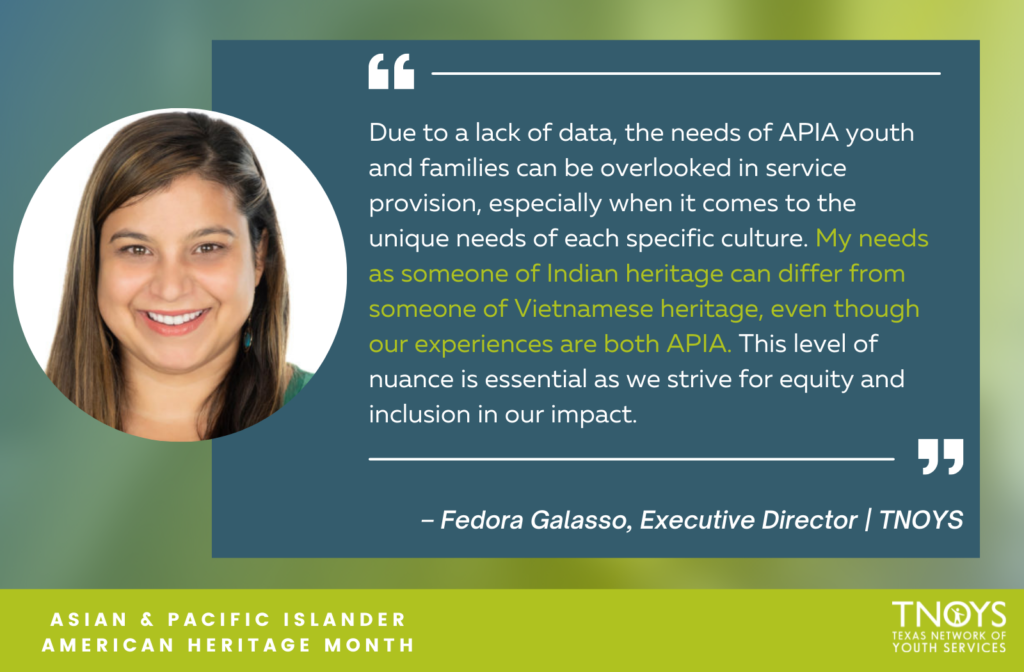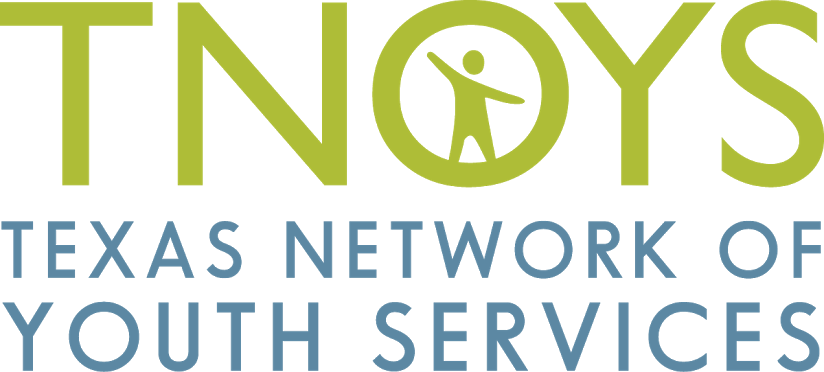TNOYS prides itself on its commitment to equity and inclusion. As Asian and Pacific Islander American (APIA) Heritage Month celebrations continue, we’re calling on youth-serving providers and advocates to elevate and understand the varied experiences of youth and young people in this community.
Supports and services are never one size fits all, especially when it comes to approaches catered to those of various identities across race, gender, sexuality, etc. Unfortunately, APIA young people are all too often left out of the conversation around improving outcomes for Texas’ youth. TNOYS believes it is important to understand and shine a light on the diversities within this community so that the voices of APIA youth are centered and their needs are met.
Read on to hear our thoughts on initial steps to better understand the needs of this community, develop more accessible services, and advance equity and inclusion for Texas’ APIA youth.
Using Data to Better Serve APIA Youth and Families

TNOYS believes in using data and research to understand the challenges and needs of APIA young people as we work to develop effective services. Resources such as the Pew Research Center and AAPI Data are great hubs for this data analysis but more information is needed. For example, the FY 2020 Disproportionality and Disparity Analysis from the Texas Department of Family and Protective Services assesses the demographics of children investigated, removed from their homes, and placed in state care in FY 2020. In the report, 15% of children reported as victims at intake are listed as “Other” as opposed to “Anglo,” “African American,” or “Hispanic.” Though the percentage is small, this number equates to over 60,000 children statewide. Who of these are APIA? We are unable to know unless specific information is available. It’s critical to have clear data points on how APIA young people in our communities are impacted by issues such as homelessness, involvement in the child welfare system, involvement in the justice system, and more.
The needs and experiences between the two major groups of people in this larger identity category— Asian Americans and Pacific Islanders—can also differ strongly. For example, even though people who identify as Pacific Islander comprise 0.2% of the general population, they represent 1.6% of the overall population experiencing homelessness. This disproportionate rate does not apply to the overall population for people who identify as Asian American.
By using data, we can not only understand factors like systems involvement and homelessness, but also understand the specific cultures young people identify with. APIA people are of more than 20 distinct origins, and each specific heritage has its own traditions, values, and histories of immigration to the United States.
Improving Cultural Competence In Practice
Data can also help us identify specific needs. For example, if we know that a specific APIA population in Texas is the Vietnamese population in Houston and Dallas, we can make sure specific services—such as translating websites and pamphlets— are readily available in that community. Although translating materials can be challenging, this is a necessary step to provide thorough services and support.
Along with languages, it’s also critical to make sure religious considerations are taken into account. From Buddhism and Hinduism to Christianity and Islam, there are many practiced by people who identify as APIA. Religion can influence needs such as dietary restrictions and privacy for worship, so being aware of these practices when it comes to the APIA populations who access services can ensure that programs are equitable.
We encourage youth-serving providers to think carefully about the range of services that impact APIA young people and strategies to improve cultural competency. Depending on the organization, this can include everything from day-to-day services to an organization’s response to emergencies such as COVID-19 and natural disasters. These considerations serve as a great foundation for improving cultural competency at your organization or agency.
Shifting Our Thinking in Youth Services
Sadly, the recent spike in APIA hate crimes means that it has never been more critical to address the needs of APIA young people from a trauma-informed perspective. Learning about these events can be re-traumatizing for APIA youth, especially those who are working to overcome trauma from being involved in systems or experiencing homelessness. Youth-serving providers need to gain the skills to have these conversations with APIA young people about current events and make sure they’re helping youth cope.
These are some of the first steps we can take right away. With more data and research, we can implement and iterate on these methods to continue to further improve outcomes for the youth and young people who need these services. We encourage providers, systems, and youth serving stakeholders to prioritize the needs of APIA communities especially given their histories marked with violence and discrimination, intergenerational trauma, and erasure from data and media.
